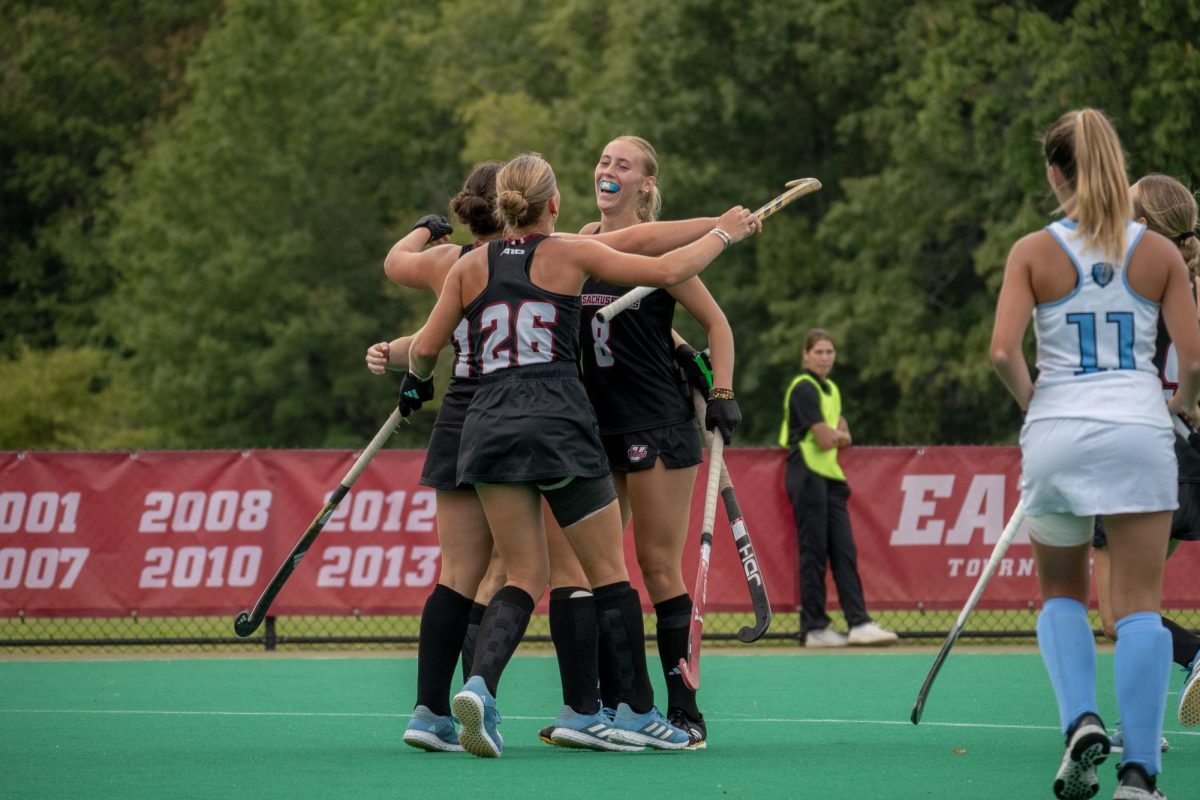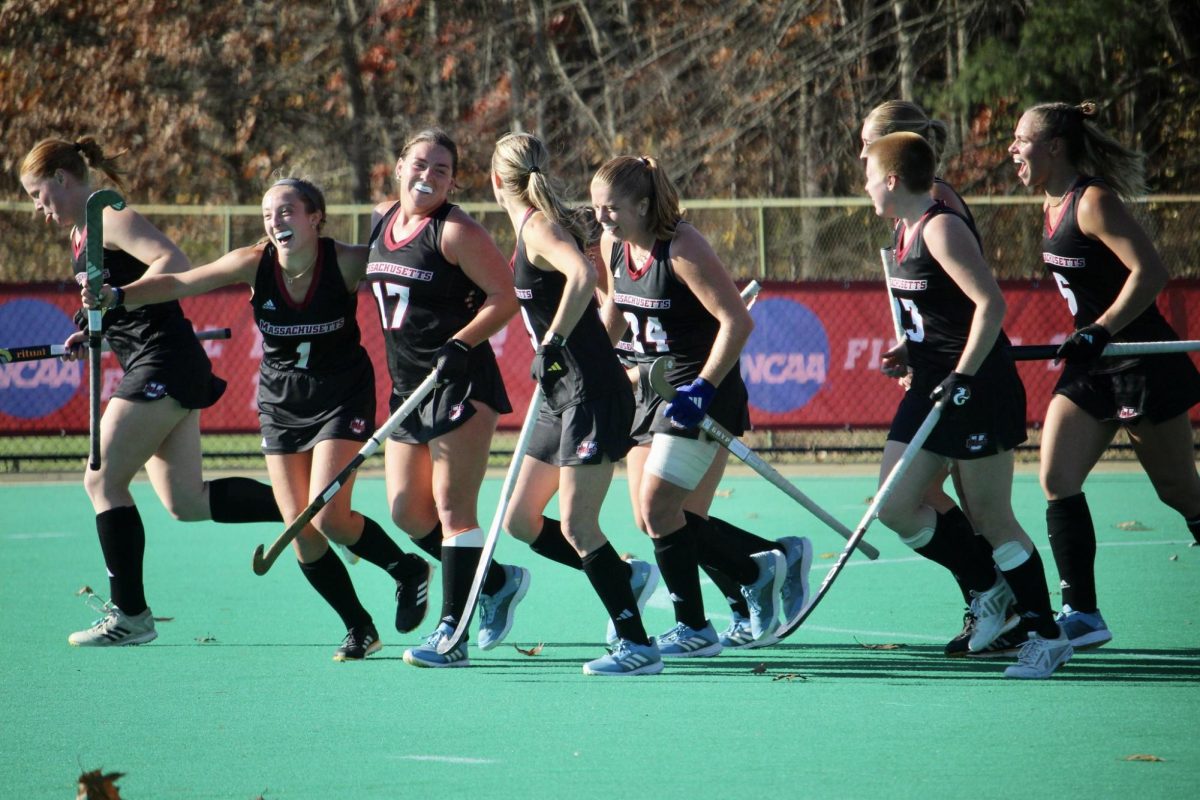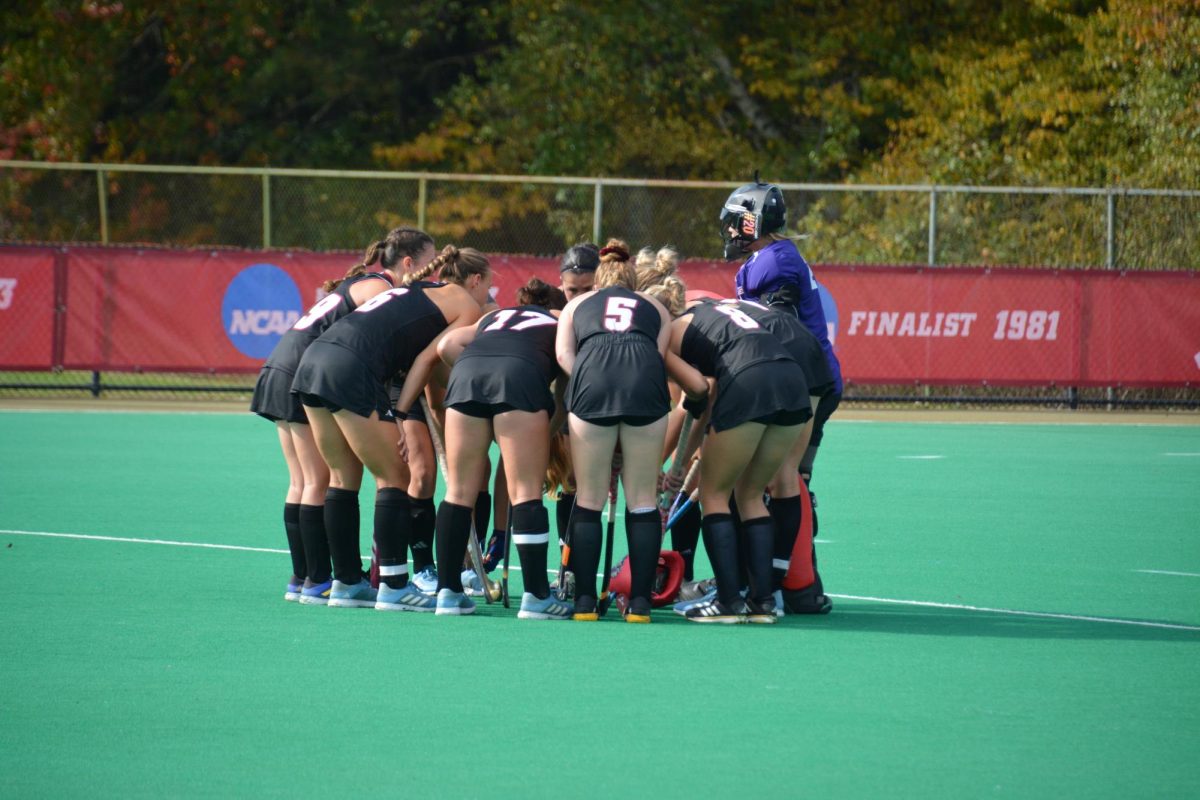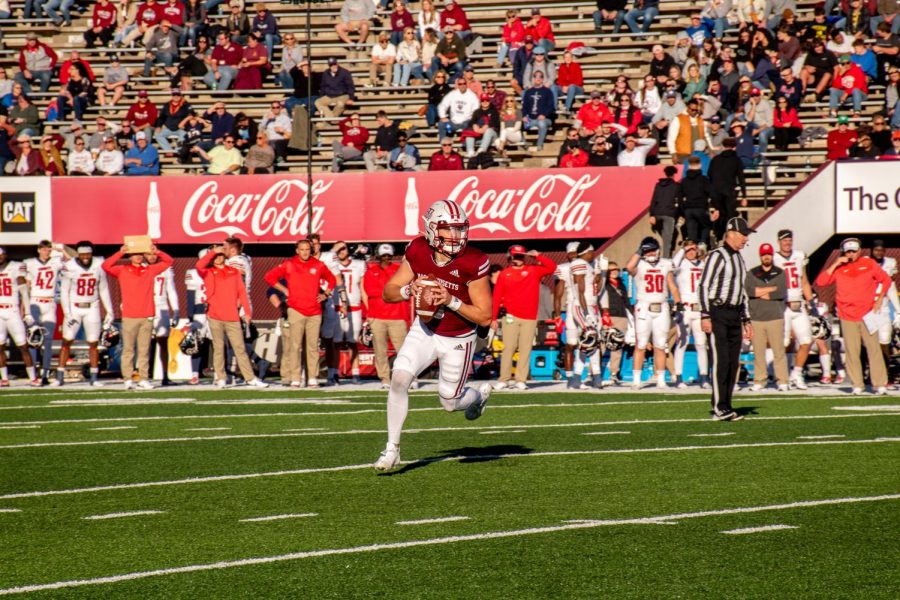Since Justine Sowry took the head coaching job for the Massachusetts field hockey team back in 2007, she repeated one goal: to take the program to the next level.
And in four short years, she did just that.
With news coming over winter break that Sowry will be moving on to coach Louisville, where she was an assistant coach from 1998-2002, the Australia native finishes one of the shortest and most successful coaching tenures in the program’s history.
During her time at UMass, Sowry was Atlantic 10 Coach of the Year three times and National Field Hockey Collegiate Association Northeast Region Coach of the Year twice. She posted a 58-31 record, all while facing a brutal non-conference schedule, and dominated the A-10 with a 22-4 record and three conference titles.
At the same time, what Sowry did for the UMass field hockey program isn’t in the numbers (and she has some great numbers). Rather, it’s the way she took a program that was stuck in a rut and turned it into a conference juggernaut in just four steps.
But what does it take to get to the next level? You know it when you see it.
Step one: Dominate the first level
In 2007, the Minutewomen were coming off of a 6-14 season and were picked third in the conference. Sowry went into her first season with what would turn out to be her most experienced roster, which featured seniors Erin O’Brien, Becky Letourneau and Kristina DoRosario, and started out with an 8-8 record. Still, the team showed flashes of excellence, especially in one-goal losses to powerhouses Syracuse and Connecticut.
UMass turned it on in A-10 play, going 6-1 and winning its first conference championship since 2001. A week later, Sowry would earn her first win against a ranked team, No. 17 Princeton in the NCAA play-in game. Once in the tournament, The Minutewomen faced off against the same UConn team they’d almost upset earlier in the season, but were ousted in a 4-1 defeat.
It was a huge step for Sowry in her coaching tenure. But with many of her key players leaving for graduation, Sowry’s second season was going to be as big a challenge as her first.
Step two: Do it again.
The 2008 Minutewomen featured three seniors and a whole lot of youth. Seniors Katelyn Orlando, Mary Shea and Erin Parker along with junior transfer Jill Powers represented a strong experienced front-to-mid. Meanwhile, sophomore defenders Jackie Tait and Jaime Bourazeris along with freshman Nikki Panciocco were part of a raw backfield along with sophomore captain Makaela Potts playing anywhere from fullback to midfield. Highly-touted freshman goalkeeper Alesha Widdall also played a vital role.
While the foundation of the 2008 Minutewomen was its experienced core of upperclassmen, the team’s success was still in question, as it relied heavily on Sowry’s first two recruiting classes. Questions didn’t last long.
The defense that was expected to be a crutch, quickly became a solid unit, which, combined with a solid offense, led by Orlando, the eventual A-10 offensive player of the year. The Minutewomen cruised to a 17-5 record, mirroring the team’s success from a year ago, again making the NCAA Tournament.
Once again, though, UMass made strong upset bids against UConn and Syracuse, but fell short and again were knocked out of the tournament by one of the two powerhouses. This time Syracuse.
Step three: Take on the best.
The 2009 Minutewomen came in with high expectations and an agenda to take their place among the top teams in the country. With a win against No. 9 Iowa and 7-1 thrashing of Quinnipiac, UMass was No. 9 in the country and ready to make a statement against No. 6 Syracuse. The Minutewomen fell short 5-2.
The next week, Sowry’s 10th-ranked Minutewomen went in against their other foe, No. 7 UConn. Again, they fell short, losing 3-0.
The Minutewomen appeared to be accomplishing one of Sowry’s goals in taking on the nation’s best. However, they fell short on the most important goal: a conference title.
UMass slumped from a Top 10 team to going 3-3 in the A-10, barely making it into the conference tournament, eventually losing to Richmond in the championship game.
In her third year, Sowry had taken the Minutewomen one step shy of the next level, and it was all too apparent who’d they have to beat.
Step four: Beat the best.
The 2010 Minutewomen came in as a balanced team: senior Katie Kelly leading the forwards, Potts leading the midfield, Bourazeris leading the defense and Widdall emerging as one of the country’s top goalies. However, early season losses to Indiana and Boston University put a damper on early expectations.
A week later, UMass played another close one-goal game with UConn, a “ripsnorter” as Sowry would call it. But this time, the Minutewomen won 1-0. A few weeks later, they hosted their other nemesis, the Orange, and beat them too, 2-0, making that two program-defining wins in a year.
In between, UMass suffered a loss to top-ranked Maryland.
Still, the Minutewomen were on a roll and cruised to another A-10 championship but stumbled to a loss to Stanford in the NCAA play-in game.
UMass still made the tournament, but barely, facing off against No. 1 overall seed Maryland again, losing 4-2.
Sowry’s coaching performance in her four years was nothing but impressive. The coach’s challenges ranged from managing a brand new roster, to balancing youth, to dealing with high expectations. Yet, through it all, the Minutewomen beat the teams they were supposed to beat and showed up against the teams they had no business being in.
Sometimes, the next level isn’t always a national championship. Sometimes, it’s not even a playoff win. But those are the sixth and fifth steps, respectively.
Not every program can go there, though. Given a few more years, perhaps the Minutewomen could make it to that level. For now, though, they’re sitting where Justine Sowry left them, looking way down at that team picked third in the conference and staring UConn right in the eye.
That’s the next level.
Nick O’Malley is a Collegian columnist. He can be reached at [email protected].












